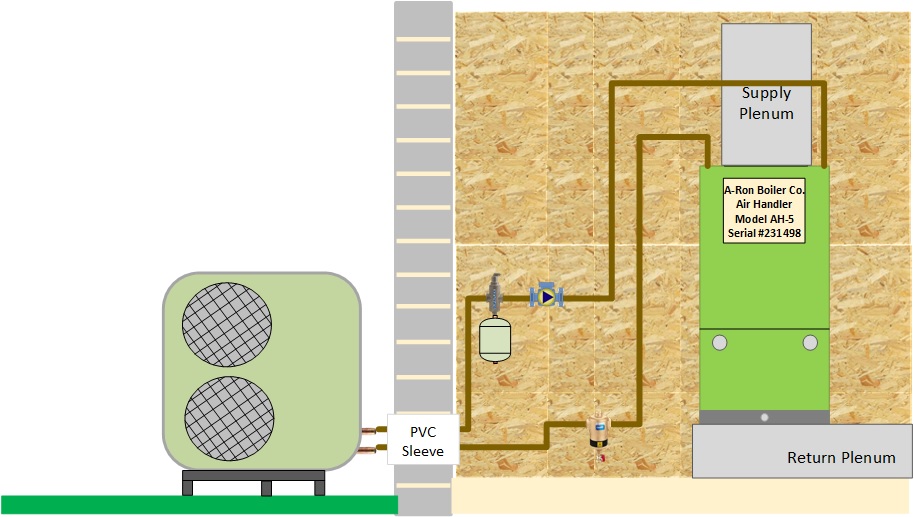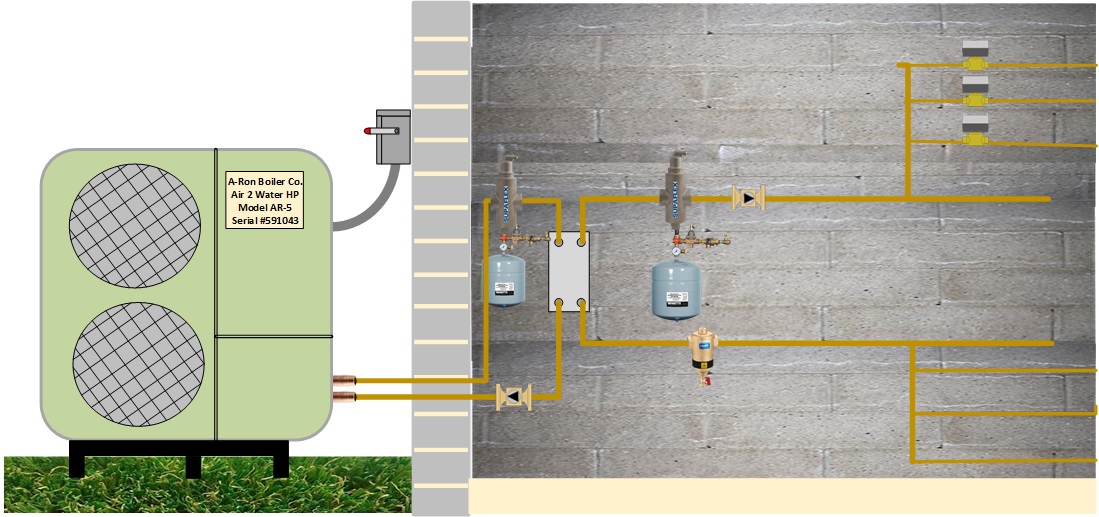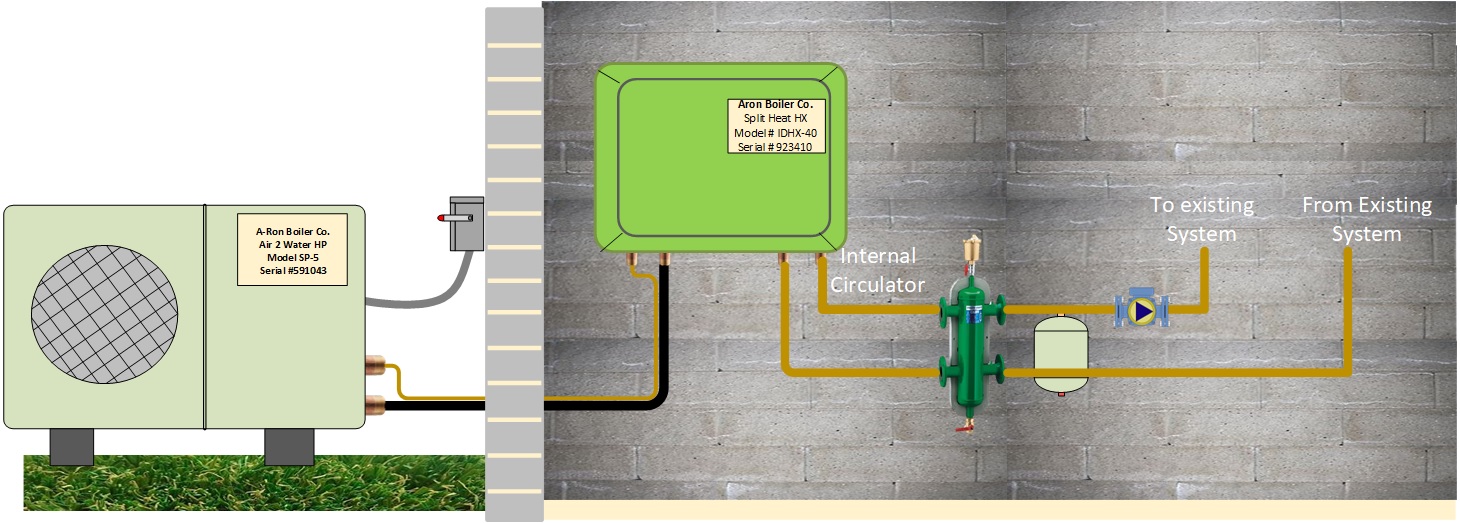Welcome to Air-Water Heat Pump Primer
Welcome to the world of residential air-to-water heat pumps (AWHP). From a 10,000-foot view, there are an estimated 12 million of these installed in Europe, while the United States has about 6 million installed, and the market is growing at an estimated rate of 270,000 per year. With states discussing reducing or ending the sale of new fossil fuel units at some point in the future, the estimated 270,000 units a year could increase in the next few years
Many contractors believe that heat pumps of any kind may not be suitable for their areas. While there may be some truth in some areas, heat pumps generally work well in most situations. I have heard comments like, "It won't heat my home in this area," or "It's too cold here for a heat pump." I heat with natural gas, and I believe it's the most cost-effective option. The above comments may also have some truths, but most are not a concern.
Natural gas is currently the most cost-effective way to heat a home, but heat pumps offer greater efficiency. Natural gas boilers are 95% to 99% efficient, while a heat pump is typically 100% to 450% efficient. How is that, you ask? How can anything be more than 100% efficient?
We will start simple; we all know the term kilowatt (KW). That is how we pay for electricity. One KW = 3.412 BTUs. Heat pumps remove heat from the air and absorb heat from the compressor and refrigeration process. The heat is transferred into an air or water heat exchanger. The heat exchanger removes the heat from the refrigerant and transfers it to the water for the hydronic system. Heat pump ratings for heating are listed as the Coefficient of Performance (COP). If a heat pump has a COP rating of 4, it means it produces 4 times more heat than it consumes, or for every kW it produces, it generates 4 kW of heat. Let's convert this to BTUs. One kilowatt is equivalent to 3.412 BTUs, and 4 kilowatts is approximately 1365 BTUs. If we use a number that may make more sense, look at 1000 watts or 1 Kilowatt. Purchase 1,000 watts or 1 kW and produce 3,412 BTUs of heat. This is more efficient than natural gas, but the COP will drop as it gets colder.
Heat pumps are available as air-to-air heat pumps, air-to-water heat pumps, and water-to-water heat pumps. The first part of its name refers to where it absorbs heat, and the second part refers to where it transfers it. For instance, an air-to-water heat pump removes heat from the air and transfers it to water in the home heating system.
Which is best, air-to-air or air-to-water heat pumps? Water-to-water heat pumps are best due to the constant temperature of groundwater. Next, with air-to-water heat pumps, the heat transferred to water can be 3500 times more than the heat transferred to air.
Let's learn more about what an AWHP is and how it works. There are two styles available; although the operation is the same, the installations differ.
Monobloc - is a self-contained unit with all the refrigeration parts like the air coil to absorb heat from outdoor air, the compressor, refrigerant accumulator, and refrigerant to water heat exchanger are in the outdoor unit. The heat exchanger will have hot refrigerant and hydronic system water with opposing flows passing through the heat exchanger. The water for the hydronic system is piped from indoors to outdoors to the heat exchanger, where it collects heat and then returns to the hydronic system within the structure.
Since the system water is being discharged to the AWHP, it will be exposed to outdoor air temperatures. Therefore, the water requires an antifreeze solution to prevent freezing and damage to the heat exchanger and outside system piping.
Only the flat plate heat exchanger and piping to the outdoor unit need antifreeze
Split System - is like an air-to-air heat pump. There is an indoor and outdoor unit connected with refrigerant lines. The indoor unit features a refrigerant-to-water heat exchanger built into it, eliminating the need for an antifreeze solution unless specific reasons apply to the heating system's application. Often, the split unit supplies slightly warmer water temperatures to the heating system or DHW production. When installing a split system AWHP, the system piping is similar to connecting to a boiler, with a few key differences. The changes typically involve an AWHP system that requires a buffer tank and a booster boiler, which may be the existing boiler, depending on factors such as heat loss, radiation within the structure, and the minimum water temperature required. Don't fall into the old way of thinking that all systems require 180f water temperature all the time. Many duct coil systems can heat with 120f - 130f water temperature.
Here are a few considerations you should be familiar with when installing an AWHP
- If you are going to produce DHW, use a larger tank; most DHW tanks are already oversized. Maybe use AWHP to preheat DHW before going to a water heater
- Pipe sizing is more critical – flow rates are higher than boiler systems
- Circulator sizes are going to be larger
- Delta-T's are different. In North America, the delta-T is a standard 20f, AWHP’s is 5°F
- Best applied to homes with a heat loss between 10-15 BTUs per square foot, but not limited to this rule
- If a booster boiler is needed, it can be a gas, oil, or electric boiler.
- If the AWHP is of modulating design, it may be beneficial to oversize the AWHP by one size
- Larger jobs - there may be multiple AWHPs used
- Should still consider OD reset
Hydronic Cooling – caution must be used to verify the radiation has provisions for condensate removal. This could be an air handler equipped with a water coil for both cooling and heating. There are also heat/cool cabinet convectors that can have provisions for condensate. There are also terminal units that look like mini-split air-to-air heat pump wall units. Remember, if the units do offer condensate trays, they must be piped to a location where the condensate can be disposed of.
Disclaimer: The information found on this website is for informational purposes only. All preventive maintenance, service, and installations should be reviewed on a per-job basis. Any work performed on your heating system should be performed by qualified and experienced personnel only. Comfort-Calc and its personnel accept no responsibility for improper information, application, damage to property, or bodily injury from applied information found on this website.



